Learn how to use FaceTime Live Captions on your iPhone, iPad, and Mac to view real-time transcriptions of your conversations.
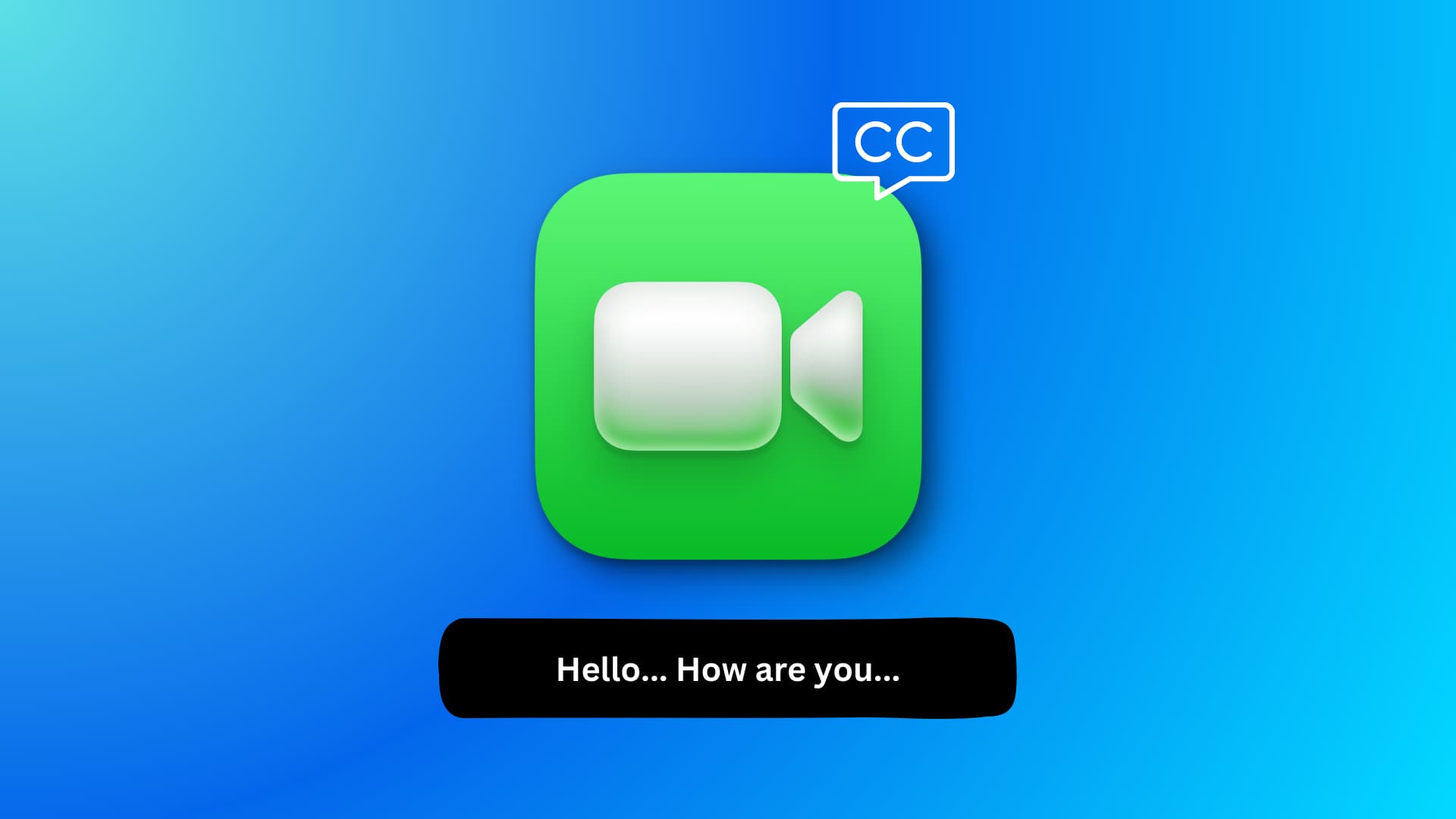
Who is it for?
Live Captions is an accessibility feature designed for individuals with hearing loss or difficulty hearing. During a FaceTime call, it converts the other participant’s speech into text, displaying it on the screen like subtitles in a movie or TV show.
Additionally, in noisy environments like a crowded stadium or public place, Live Captions can help by displaying what the other person said on the FaceTime call, ensuring you don’t miss anything important.
Supported devices
FaceTime Live Captions works on:
- iPhone 11 and newer
- iPad mini (5th generation and later), iPad (8th generation and later), iPad Air (3rd generation and later), all generations of iPad Pro 11-inch, and iPad Pro 12.9-inch (3rd generation and later)
- MacBook or Mac desktop with Apple silicon (M1, M2, M3, M4, and newer) running macOS Ventura or later. Note that FaceTime Live Caption is not available on Macs with an Intel processor.
Supported languages
You can only use FaceTime Live Captions if your device language is set to English (US) or English (Canada). It won’t work for any other language.
Note: You won’t see the option for Live Captions, or it won’t work even if your device is set to another version of the English language like English (India), English (UK), English (Australia), English (Ireland), English (New Zealand), English (Singapore), or English (South Africa).
If your device language is unsupported, we show you how to change it below.
Turn on Live Captions for FaceTime
You can turn it on during a FaceTime call (explained later in this post) or from device settings.
On iPhone or iPad
- Open the Settings app and tap Accessibility.
- Scroll down to the Heading section and tap Live Captions.
- Turn on the toggle for Live Captions in FaceTime.
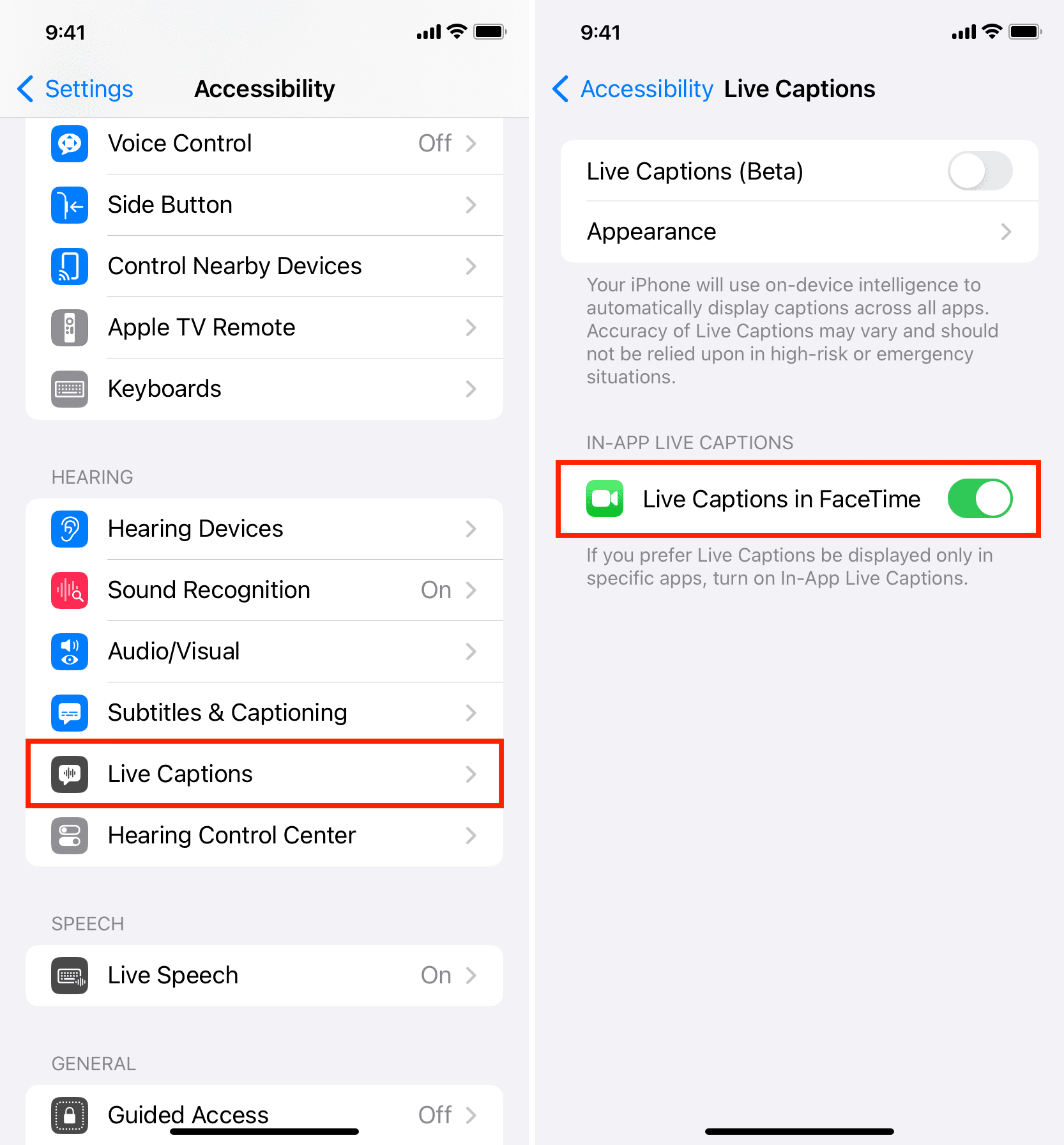
If you want to use Live Captions in other apps, you can turn on the switch for Live Captions at the top, but for now, we’ll stick to talking about Live Captions in FaceTime.
Additionally, you can use the Appearance option in Live Captions settings to change the text size, text color, background color, idle opacity, and more. Most of these settings are also available on Mac.
On Mac
- Open System Settings and select Accessibility.
- Scroll down and click Live Captions.
- Turn on Live Captions in FaceTime under the In-App Live Captions heading.
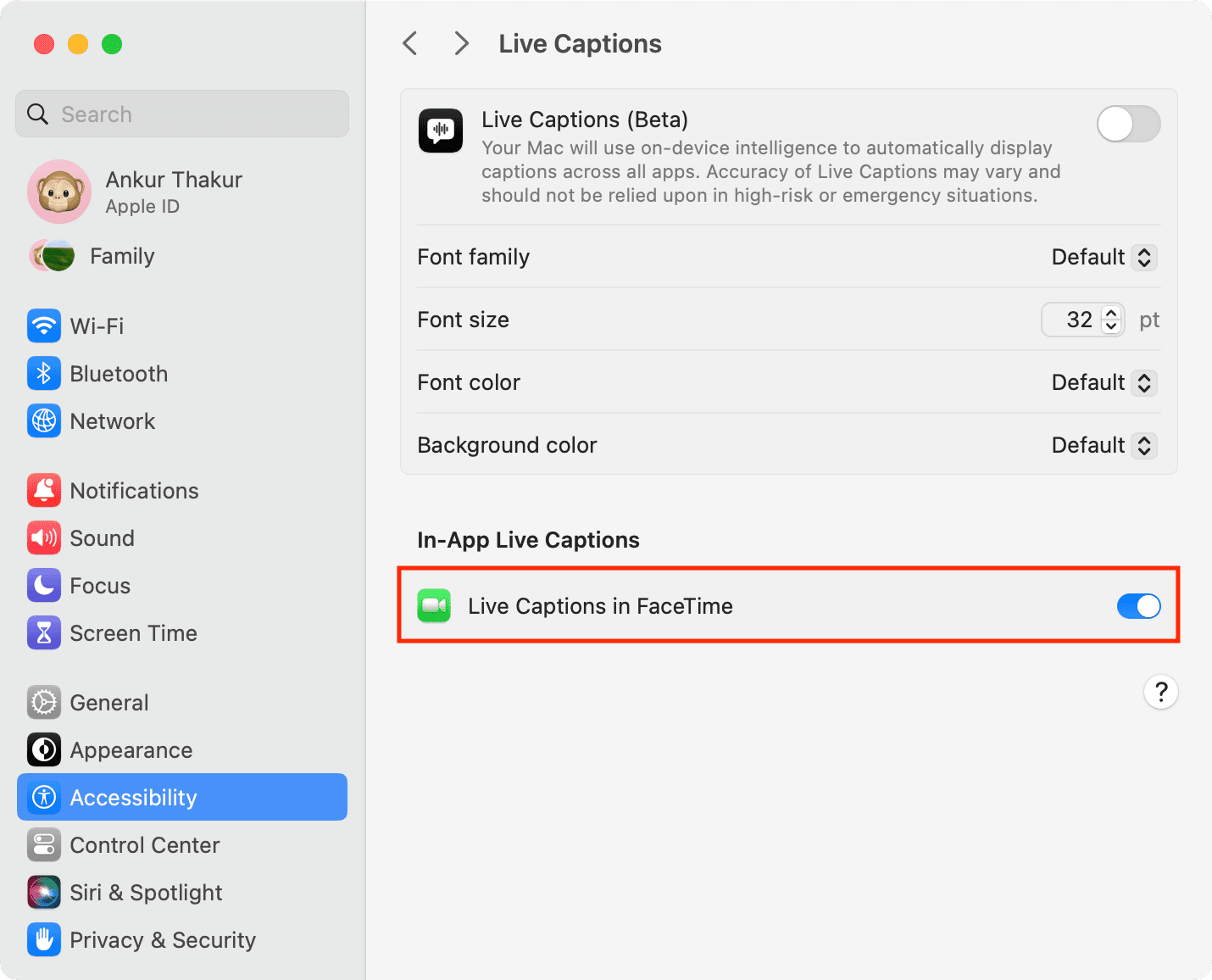
How to use Live Captions in FaceTime
Once you’ve turned on Live Captions in settings, here’s how to use it during a FaceTime video call.
On iPhone and iPad
1) Make or receive a FaceTime video call.
2) If you don’t see the Live Captions box inside the FaceTime call screen, tap the info button ⓘ next to the person’s name, turn on Live Captions, and tap Done.
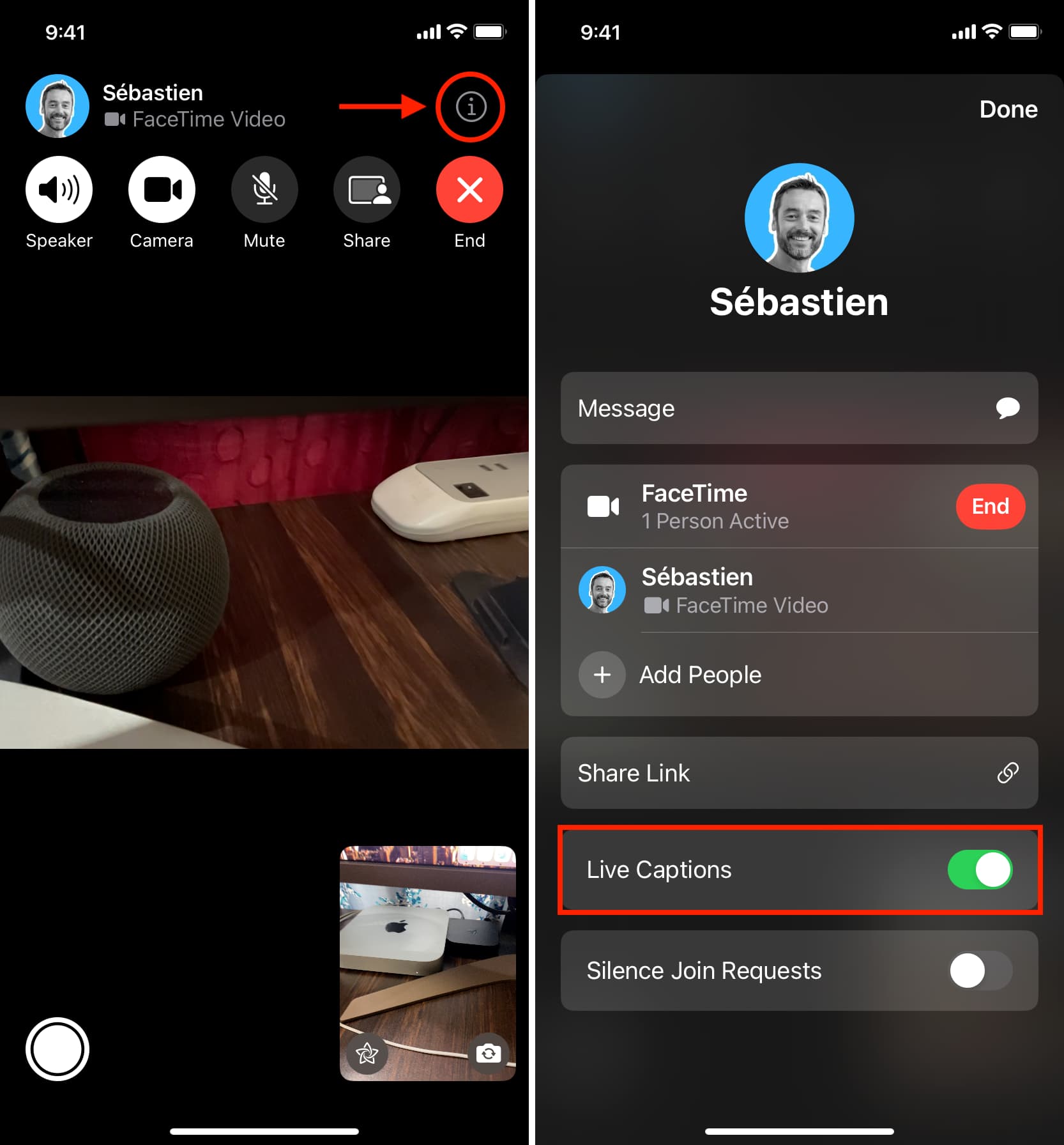
3) Now continue your call, and when the other person speaks, in addition to their voice, you’ll also see what they said in textual form on your screen inside the Live Captions box.
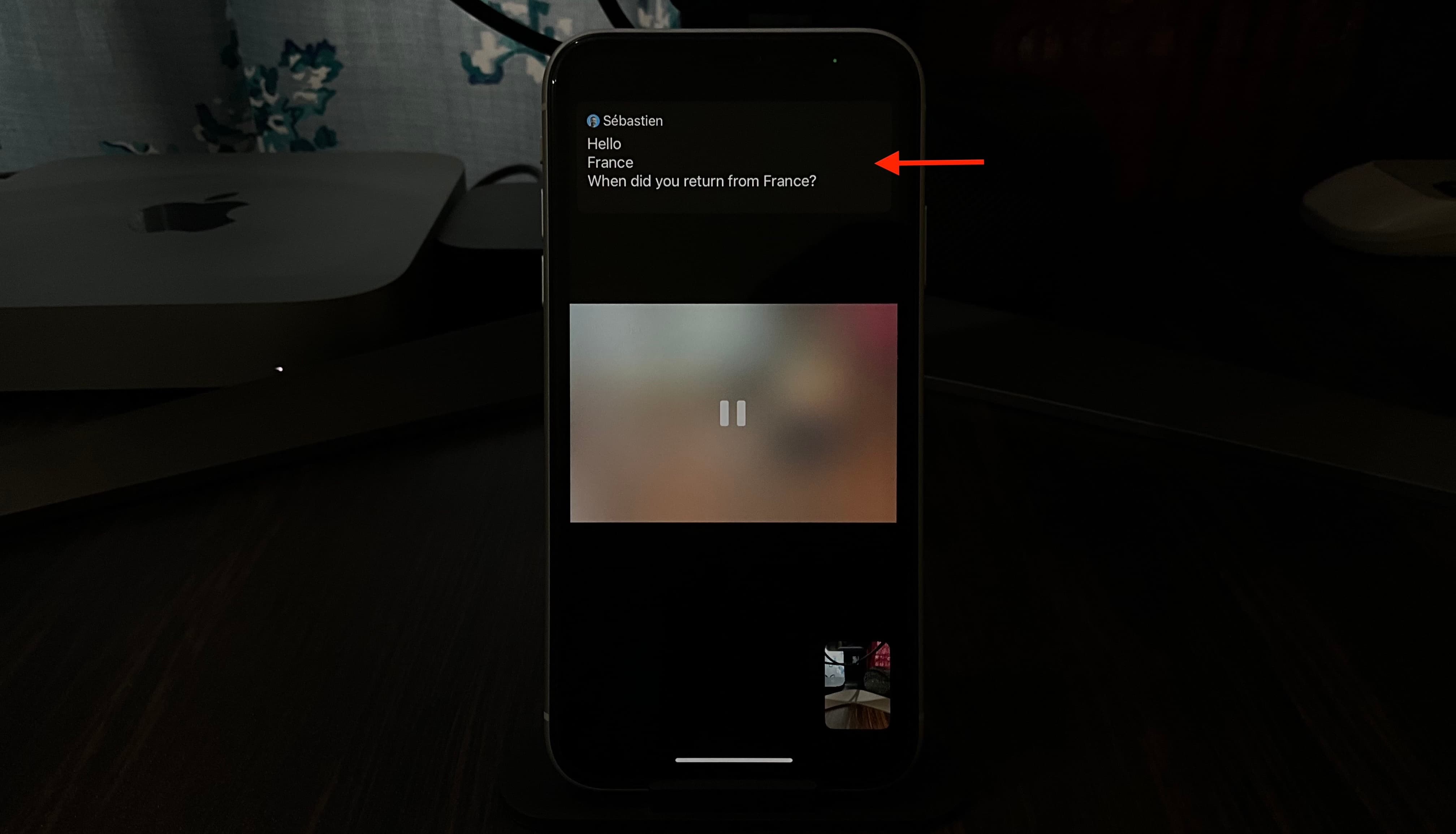
On Mac
You should see the Live Captions box automatically in FaceTime, provided you enabled this feature in macOS System Settings. When the person on the other end of the call speaks, you’ll see their spoken words in a transcribed form on the right sidebar.

However, if you don’t see the captions, click the sidebar button in FaceTime and turn on Live Captions. If this is the first time using this feature, you may have to download a language model by hitting the Download button in the popup.
Using the Live Captions window
You cannot change the location of the Live Captions box, and it stays fixed:
- On iPhone: At the top of the screen.
- On iPad: On the left/right side when your iPad is in landscape orientation and on the right side when it’s in portrait orientation.
- On Mac: In the right sidebar.
However, you can make the Live Captions box bigger or smaller on your iPhone or iPad by tapping it or by hitting the two arrow icon.
On Mac, you can adjust the FaceTime window size to make the Live Captions sidebar bigger, smaller, wider, or narrower.
Live Captions during FaceTime group call
Live Caption works during a group FaceTime video call. It will show the individual names of the participants and what they said.
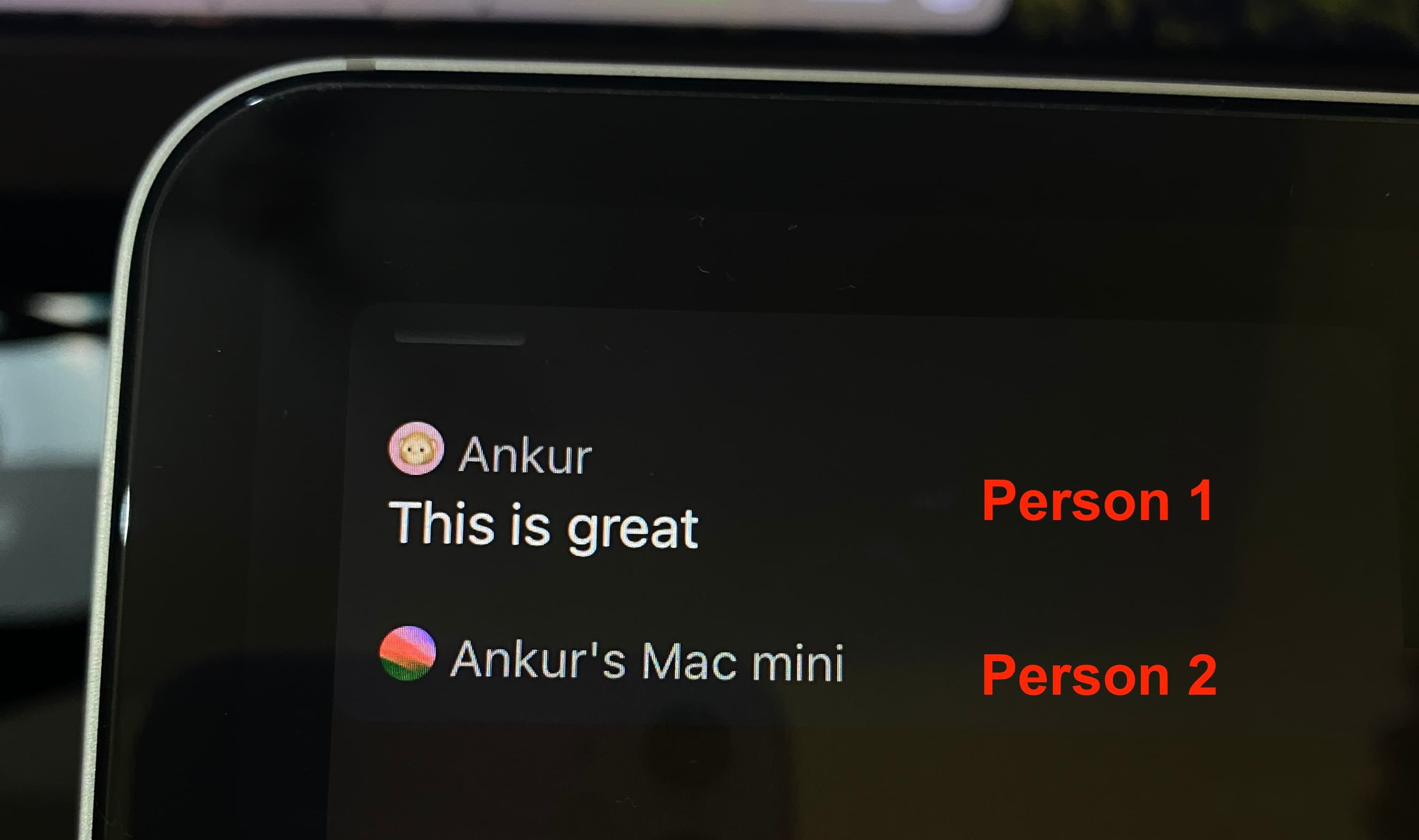
Does it work for FaceTime audio calls?
Live Captions only work during one-on-one or group FaceTime video calls but not during FaceTime audio calls. However, you can enable system-wide Live Captions, and then even your audio calls should be transcribed, as shown in the image below.
Don’t use it for emergencies
Live Captions’ accuracy may vary based on situations like the speaker’s voice, ambient noise, choice of words, and more. Thus, Apple asks you not to rely on FaceTime Live Captions for high-risk or emergency situations.
Live Captions uses more battery
When you use Live Caption, it uses an additional amount of battery than a normal FaceTime call. This is because your device does extra processing and needs more power to convert spoken words into text in near real-time.
What happens with Picture in Picture?
You can continue your FaceTime video call in Picture in Picture, but it won’t show Live Captions. You must be in the FaceTime app to see a transcribed feed of what the other person is saying.
You can’t take screenshots of Live Captions
Just like Apple does not allow native recording of a FaceTime video call (but allows recording phone and FaceTime audio calls), you can’t take a screenshot or do a screen recording of FaceTime Live Captions on an iPhone, iPad, or Mac. You can’t even use a third-party screenshot app like CleanShot X on Mac to capture Live Captions text!
Turn off Live Captions
If you don’t want to see Live Captions on your FaceTime call, you can turn it off from Settings or the FaceTime app.
- From Settings/System Settings: Go to Accessibility > Live Captions and turn off Live Captions in FaceTime.
- During a FaceTime call: Tap the info button ⓘ > turn off Live Captions, and tap Done. On Mac, hit the sidebar icon and disable Live Captions.
What to do if you can’t turn on or use Live Captions in FaceTime
Here’s what to do if you have a compatible device but still don’t see the option for Live Captions.
Set device language to English (US or Canada)
As aforementioned, FaceTime Live Captions only works when your device is set to English US or English Canada. If your device is set to a different language, and you’re comfortable with changing it, here’s how to switch the language.
On iPhone or iPad
- Go to Settings > General > Language & Region, and tap Add Language.
- Select English (US) or English (Canada).
- Tap Use English (US/Canada) from the bottom slide-up confirmation screen.
- Choose to Restart if asked.
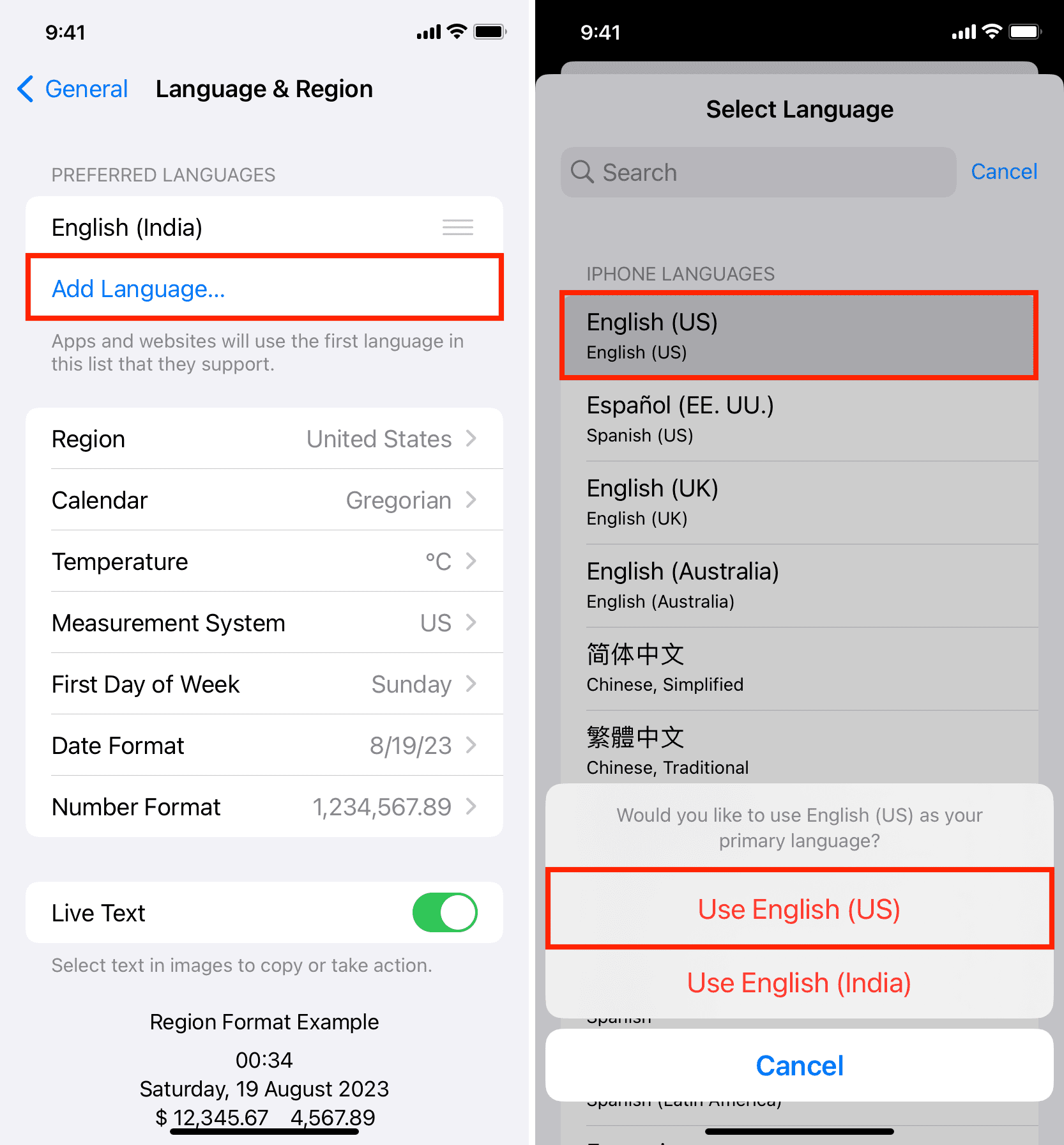
Note: If additional languages are added, drag English US/Canada to the top. You can also swipe left on additional languages and tap Delete to remove them.
On Mac
- Go to System Settings > General > Language & Region.
- Click the plus button (+) in the Preferred Languages box.
- Choose English (US) or English (Canada) and click Add.
- Confirm by hitting Use English (US or Canada) from the confirmation window.
- Restart your Mac when prompted.
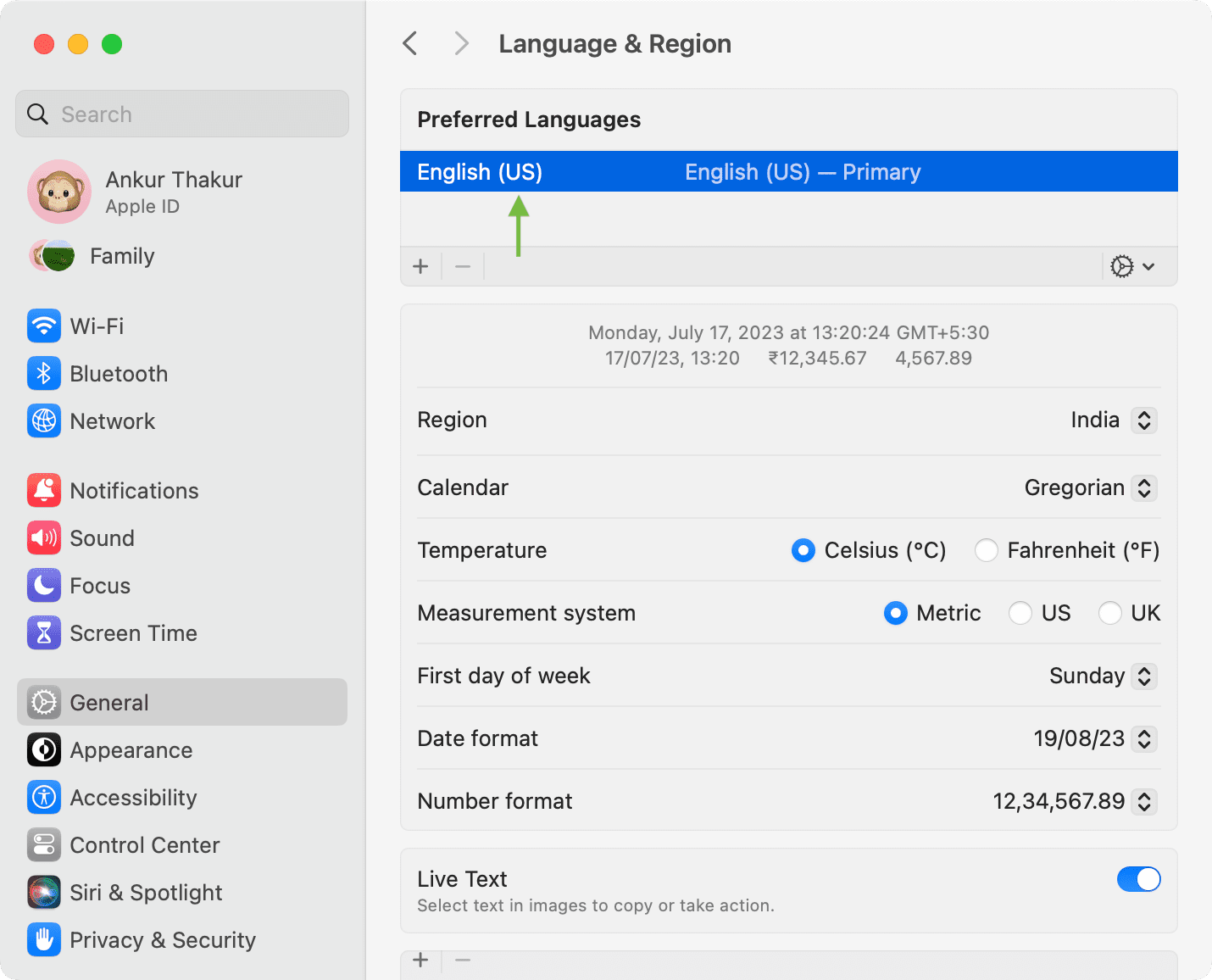
Choose “US” as the Measurement System
On my Mac, the measurement system is set to Metric, and FaceTime Live Captions works. But surprisingly, on my iPhone, when it was set to Metric, I didn’t see “Live Captions in FaceTime” in Settings > Accessibility > Live Captions.
To address this, I went to Settings > General > Language & Region > Measurement System and selected US. And then, magically, I got the option for “Live Captions in FaceTime” on the Live Captions accessibility screen.
Restart your device
Turn off your iPhone and iPad and turn them back on. On Mac, hit the Apple icon and choose Restart.
Update your device
Go to Settings or System Settings and update your phone, tablet, or computer.
Ask the other person to speak clearly
FaceTime Live Caption may not show what’s spoken on the screen if the person on the other side of the call doesn’t speak clearly or if there is a lot of background noise (fans, appliances, and such) on their end. So, ask them to use AirPods or speak near the device microphone for Live Captions to work better on your end. They can also turn on Voice Isolation to reduce ambient noise.
This audio-to-text feature may also struggle with certain unknown or lesser-known names of people, places, streets, dishes, etc., so keep this in mind while using it.
Other tips related to voice and text: